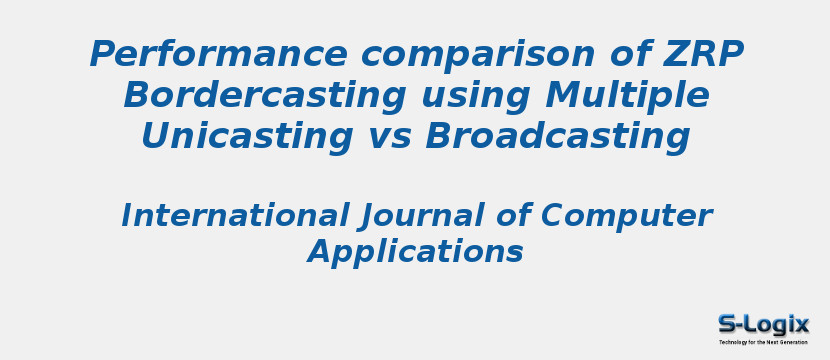Research Area: Mobile Ad Hoc Networks
MANET (Mobile Ad hoc Networking) is an ad hoc network formed by wireless mobile nodes without any fixed infrastructure. Each node can send, receive and forward data from other nodes. The volatile nature of wireless medium and mobility of nodes pose a great challenge for efficient routing in MANET. There are several routing protocols developed for MANET. ZRP (Zone Routing Protocol) is one of the hybrid MANET routing protocols. It combines proactive and reactive routing approaches for better scalability. In ZRP, the nodes build overlapping zones and maintain topology information of the nodes within their zone. The zone size is decided by zone radius which is defined as no. of hops. Proactive routing is used within the zone and reactive routing is used outside zone. ZRP uses bordercasting to efficiently control the flooding of reactive route queries in outward regions. Each forwarding node propagates the query to selected neighbors which lead to uncovered border nodes of the zone. Ad hoc networks commonly use single channel network. While using single channel network in ZRP, bordercasting can be done either using multiple unicasting or broadcasting. This paper analyses and compares the impact of using multiple unicasting vs broadcasting on routing performance of ZRP, in single channel wireless network. Networking Simulator 2 (NS2) has been used for the simulations. The Qos parameters used for routing performance measurement were Packet delivery ratio (PDR), Average end-to-end delay, throughput and Normalized routing load (NRL). The simulation was done at high mobility by varying network size from small to large network. While using broadcasting, QD2 query control method was used to further control flooding of route queries to uncovered regions. The simulation results conclude that broadcasting is more performance efficient than multiple unicasting for bordercasting in ZRP.
Keywords:
Author(s) Name: Jignesh J. Chudasama, Amit Nayak and Bimal Patel
Journal name: International Journal of Computer Applications
Conferrence name:
Publisher name: IJCA
DOI: 10.5120/ijca2016909941
Volume Information: Volume 141 - Number 12
